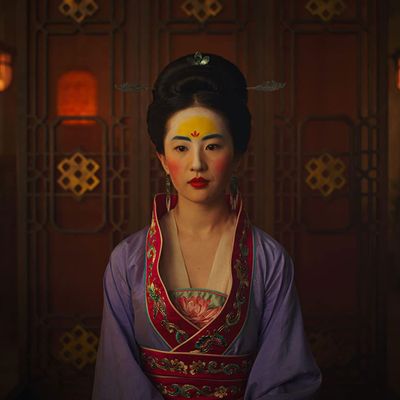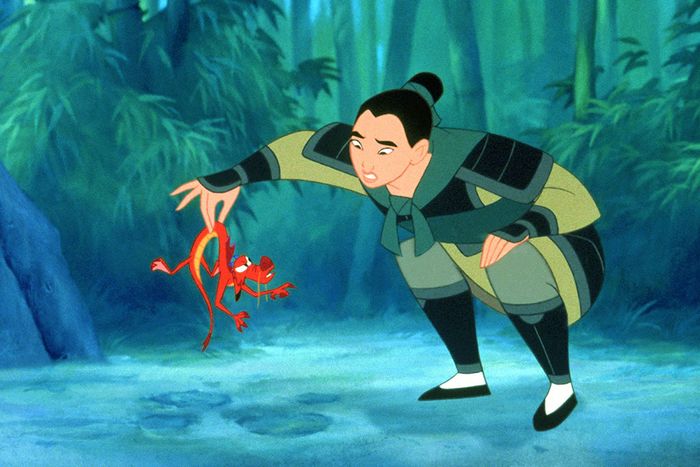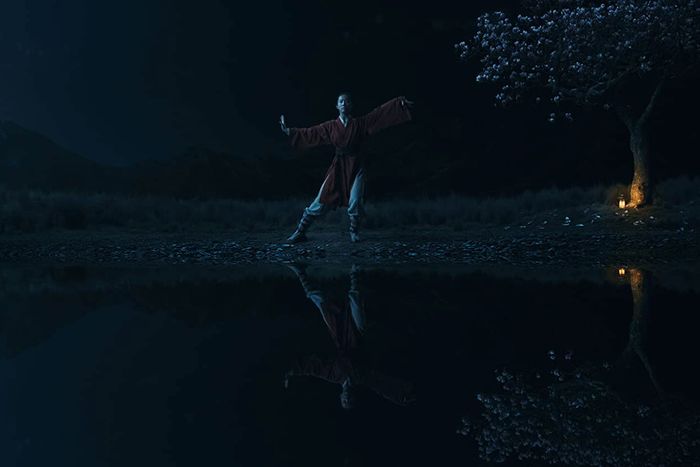
On July 7, 2019, Walt Disney Studios released the first trailer for its live-action version of Mulan. The long-awaited teaser set the Sinophile world abuzz, generating over 175 million views within 24 hours. But the excitement was accompanied by an equal amount of apprehension, as critics and fans voiced concern over aspects of the 1998 animated Mulan that were now missing.
Chief among these criticisms was the fact that beloved characters like Mushu, Mulan’s chatty ancestors, and the chiseled General Li Shang were nowhere to be seen. Academics and culture writers jumped to the defense of these artistic choices, arguing that the exclusion of Mushu and other magical elements marks an attempt by Disney to represent Chinese culture and history in a more authentic manner, both to tell a non-Western story with respect and to woo audiences in China. These arguments position director Niki Caro’s new film as potentially more faithful to the original source material, “The Ballad of Mulan,” the sixth-century poem that is considered the earliest extant transcription of the Chinese folktale.
Among other important details, the ballad contains no hint of romance between Mulan and any of her male contemporaries. But while 2020’s Mulan doesn’t replicate the hero’s romance with superior Shang, it does give her another object of affection in the form of Chen Honghui, a fellow soldier. And like the ’98 movie, the new Mulan involves an entire matchmaking plotline that does not exist in the original poem. It seems that a completely faultless adaptation continues to be unachievable.
In terms of fidelity to the original, the cartoon predecessor is certainly imperfect, but it remains an important cinematic study of what it means to look Chinese but not always feel it. In 2018, the Filipino American writer and artist Joshua Luna argued in a series of tweets that the 1998 animated Mulan was a story for Asian Americans: “Although set in China with Chinese characters, the heart of Fa Mulan’s story couldn’t be more Asian-American: the pressure of assimilating into the dominant culture, the fear of disappointing her parents by failing to do so, and the struggle of forging her identity on her own.”
As an English-speaking Chinese person who grew up in Singapore, a Southeast Asian country with an enduring legacy of British colonization, 1998’s Mulan has always made sense to me too. In fact, it was only in the United States that I properly encountered “The Ballad of Mulan” for the first time, in a class called “Women & Literature in Ancient China.” I wasn’t surprised that the original text contained no mention of talking dragons, partying spirits, or an implicitly queer romance. But I was struck by how little this version of the story resonated with me — the version that was closer to the culture of my ethnic motherland. “Reflection,” the song that is the emotional heart of the original Mulan, speaks to experiences like these. It captures the ineffable feeling of Asian identity in the diaspora, where one’s racial appearance often does not reflect the hybrid cultures and values contained inside a person.
Really, so much of what made the animated Mulan special for Asian kids in the diaspora is that it was a mash-up of everything we knew, from Chinese myth and Eastern maxims to Western musical theater and distinctly American humor. Its lack of authenticity yielded some of the film’s most interesting ambiguities: its latent queerness in Shang’s inferred bisexuality; its destabilization of race in Mushu, where Eastern iconography was shaken up by Eddie Murphy’s unmistakable — and Black — voice. These were the parts of Mulan that were complicated and messy. They represented the celebration of difference and the discovery of sameness between cultures and peoples that we still imagine to be unrelated.
The truth is, no retelling of Mulan’s story has ever been faithful to the sixth-century source material. And according to Anne Zlatow, a Yale graduate in East Asian languages and literature whose research investigates “The Ballad of Mulan,” these inconsistencies aren’t necessarily blunders: “It wasn’t only Disney that used creative license to expand on the story,” Zlatow tells me. “Chinese retellings didn’t stick to the ballad entirely either. Xu Wei’s play from the Ming dynasty involved magic, but magic was never mentioned or implied in the ballad. Does this mean Chinese retellings are wrong? No. But what, then, is authentic?” Even Chinese films based on the story of Mulan have embellished the plot in order to flesh out a compelling narrative from the poem’s sparsely evocative 400 lines. In fact, it was Chinese Weibo users who turned the complaint “Mushu is not in Mulan” into a trending topic after the trailer was released.
In reality, Disney has not stated outright that authenticity is the aim of its project. The geographical and historical inaccuracies in the trailer — showing a style of housing found in southern China during the seventh century when the original legend places Mulan in fifth-century northern China — suggest that the studio might not be all that concerned with giving Chinese audiences a culturally accurate telling of the story. Nonetheless, the discourse sparked by the new film rehashes well-worn Orientalist ideas about China, and Asia at large: an imagining of the Orient as a locality where only the purest, most original form of culture is acceptable. The broad strokes of the criticism — pointing to changes equally decried and celebrated by commentators in the West, like the jettisoning of Mushu, the hushed solemnity of the trailer, and Liu Yifei’s delicate Chinese accent — seem to mirror some of the same issues that critics in Singapore identified in Crazy Rich Asians, that other (East) Asian-led Hollywood juggernaut.
Frankly, movies like these center the worldview of Western audiences with a hunger for a romanticized representation of an exotic Asia but a poor understanding of the realities of the region. Crazy Rich Asians’ performance at the box office underscores this fact, grossing $174.5 million in North America and only $64 million in the rest of the world. A movie like Crazy Rich Asians, which fundamentally misrepresents Singaporean history, culture, and society, depicts the West’s idea of the East — an image that caters not only to white people but to Westerners of Asian descent as well. Will 2020’s Mulan fall into the same trap?
The thing is, authenticity is a moving target. Once a work of art confronts a diaspora, or any group of people with diverse experiences, for that matter, there are infinite ways in which it can be accurate and inaccurate all at once. To place a premium on a mythical, pure Chinese depiction — an Orientalist fantasy that Chinese audiences themselves don’t always want — is to limit the evolution of a sixth-century poem adapted and readapted in contemporary times.
And we should remember that Disney’s telegraphing of recognizably Eastern details does not amount to authenticity achieved. (Those southern-Chinese houses, by the way, are characteristic of the Hakka dialect group, of which my mother is a descendant. It’s a detail that offers me mixed emotions: a twinge of satisfaction at seeing my own cultural lineage depicted onscreen, and a sense of remorse, as I know that my personal affection for these houses does not justify the inauthenticity of shoehorning them into this story and the inaccuracy that it evokes for other Chinese people.)
If anything, the new Mulan and its attendant problems of representation answer to the demands of a market underpinned by a larger ideological issue: a collective fervor for a singular, authoritative depiction of a culture and a people.
After two delayed theatrical-release dates due to the coronavirus pandemic, Mulan is finally going to be released on Disney+ on September 4 — more than a year after the first trailer hit the internet. Since then, so much has happened, including a call to boycott the film because Liu expressed support for Hong Kong police who violently suppressed protests. And in the wake of this year’s heightened conversations about Blackness and its key role in shaping the culture we all consume, there is something vexing about a new Mulan that has excised Mushu as part of an effort to appear more purely “Asian.”
The best-case scenario for this movie is that it will contain a grain of truth, and hopefully that truth will mean the most to people who look like Hua Mulan, and who recognize her in themselves. But the animated feature will forever be a vital meditation on selfhood and identity. After all, Fa Mulan’s deepest desire was to see her full self — contradictions, confusion, and, yes, impurity — reflected back at her. She voiced the question that the Asian diaspora, still, has never quite managed to resolve: What does it mean to look one way and to be another, to hold different worlds within?
Don’t have Disney+ yet? You can sign up here. (If you subscribe to a service through our links, Vulture may earn an affiliate commission.)



